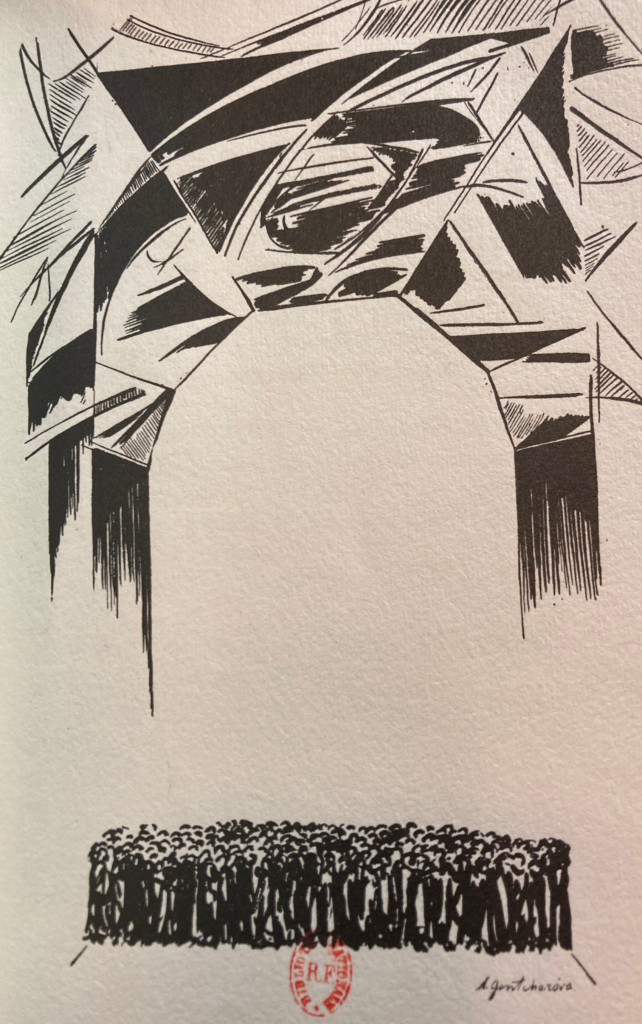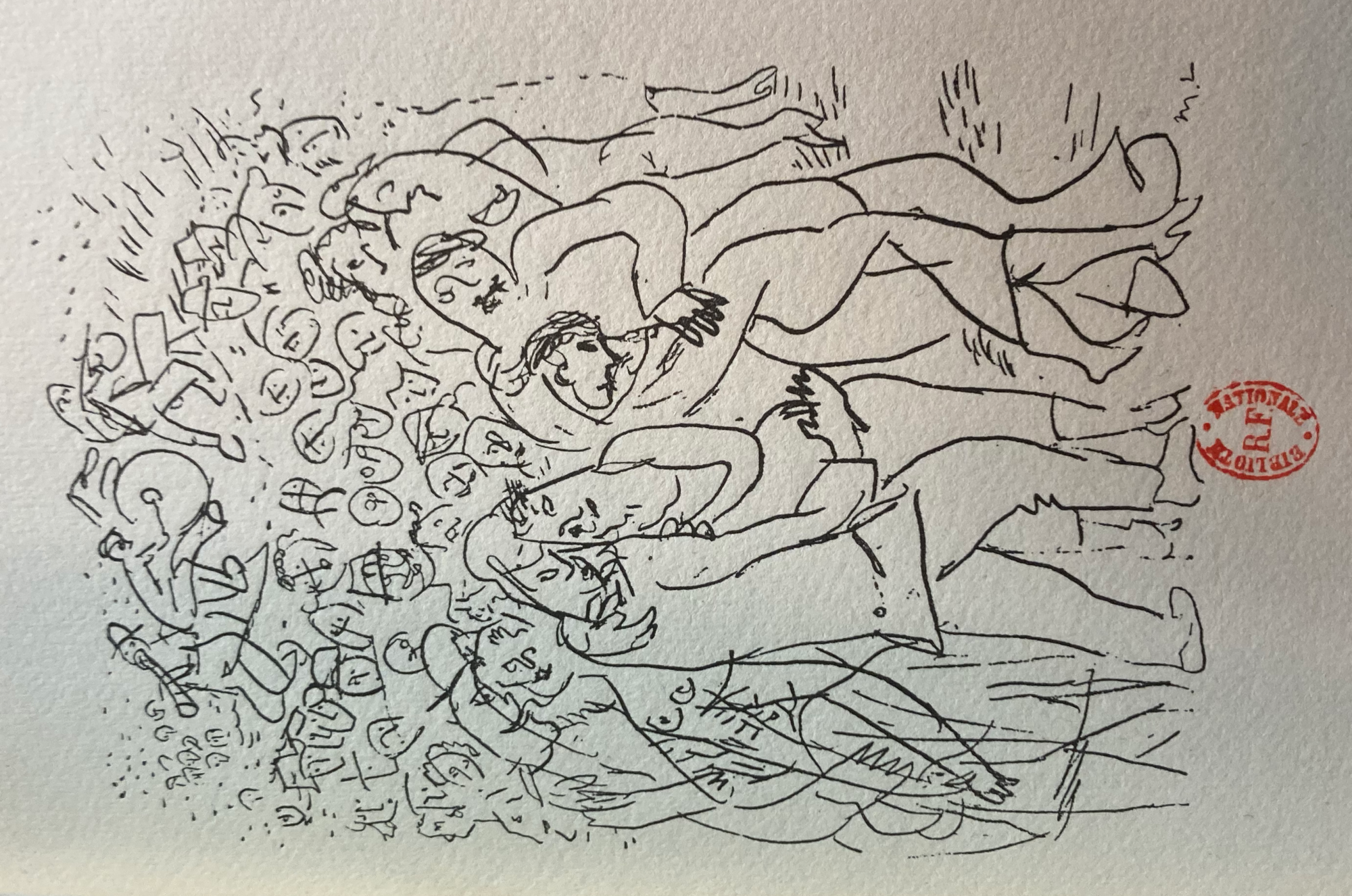
ISARLOV, George. L’Annonciation: Roman / ill. par E. Chimot, A. Dignimont, N. Gontcharova et M. Larionov. — Paris, Société d’Edition et de Librairie Henri Reynaud, 11 June, 1925.
Octavo (150 x 190 mm). 245 pp., 4 black and white prints. Limited to 475 copies.
Title page. Courtesy of https://sovcom.org.uk/
George Isarlov’s (1897-1978) novel recounts the narrator’s experience of art, race, love and sexuality through his encounter with Nadia and Alexei, most likely two former Russian Empire’s expatriates. In one of his chapter, he discusses the Russian sect of “Khlisti” [Хлысты or Khlysts], “Mysticisme du corps”, the Crimean Tatars, the Caucasus, Persia and India altogether. The book unfortunately did not gain much popularity even amidst the Russian diaspora in France, and the author remained rather unknown.

Similarly to the other three artists of this edition, Goncharova contributed one illustration which was partially reproduced as a tailpiece at the end of the novel. In the book, we can easily recognize which illustration is by Goncharova because of its decisive and dynamic contour lines of a semi-futurist ambiguous image. Goncharova does not extend her creativity past the already developed forms for her common “Russian-Asian”, emigration and urban subjects. In her illustration for Isarlov, we see an image of a croud of factory workers with a massive crystallized arch oppressively floating above them, resembling her works for Rybakin’s City (1920) in its socialist or dystopian sentiment. The crowd image is also repeated at the end of the novel.
Goncharova’s illustration. Courtesy of BnF
Another artist for the edition is Édouard Chimot, (1880-1959), a French painter, engraver and art director, best known for his work as an illustrator and for having directed, among other things, the publication of some thirty works by Éditions d’Art Devambez during the 1920s in Paris. A First World War veteran, he became an established artist after the war at a comparatively late age and specialized primarily on female nudes — one of such works is added to the illustrations of Isarlov’s novel. Other contributors are the Parisian artist André Dignimont (1891-1965) and Mikhail Larionov who is presented with an animated etching with his typical simplified forms in the naive style from his Venus series (1914), this time multiplied to form a hectic crowd (presented in the header on this page).
- L’art décoratif théâtral moderne
- Samum
- Motdinamo
- Transparent Shadows and Forms
- Twelve. Scythians.
- Gorod (City)
- Conte de Tsar Saltan
- The Russian Ballet in Western Europe 1909-1920
- Tale of Prince Igor
- L’Annonciation: Roman
- Le thé du capitaine Sogoub
- Les Montparnos
- Les Ballets Russes de Serge de Diaghilew
- Skazki (Fairytales)
